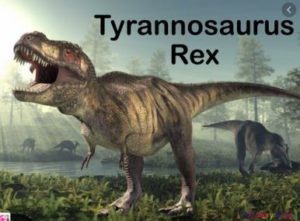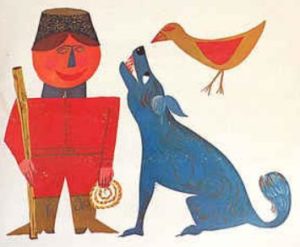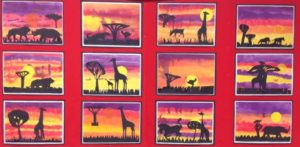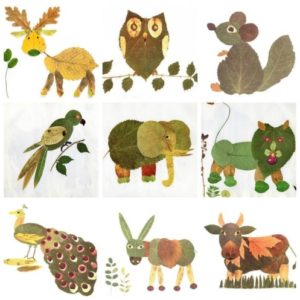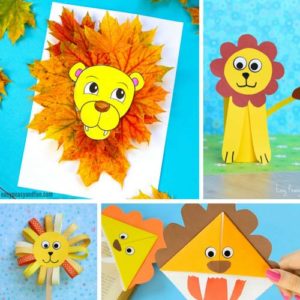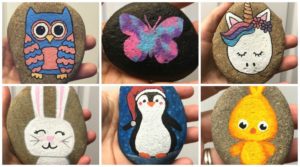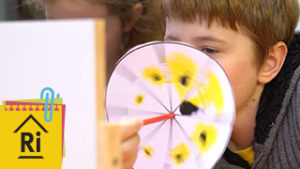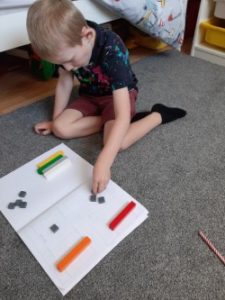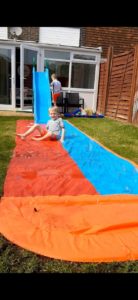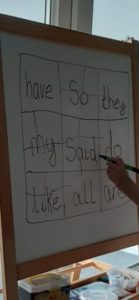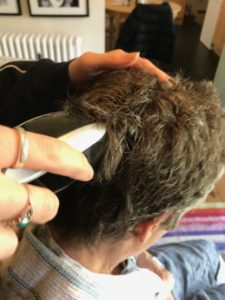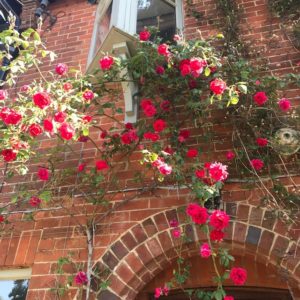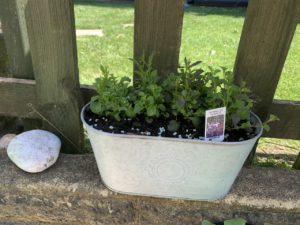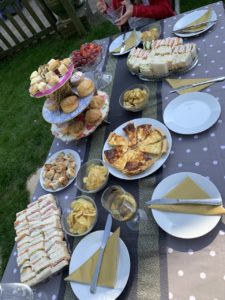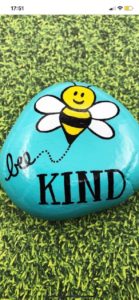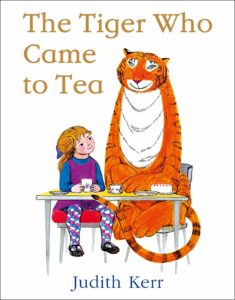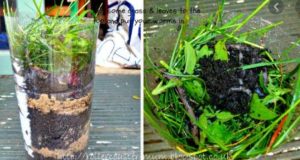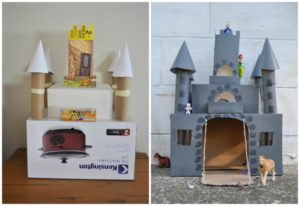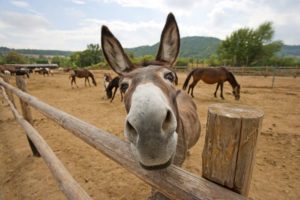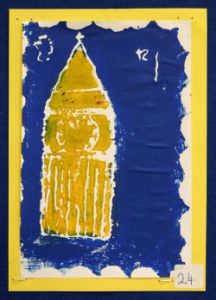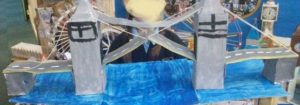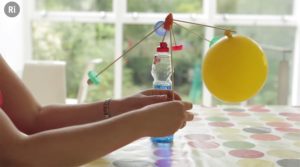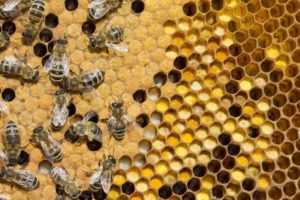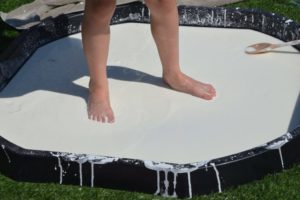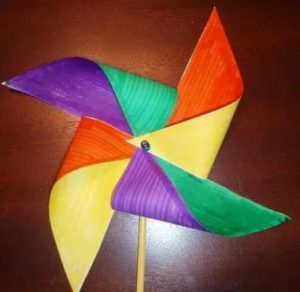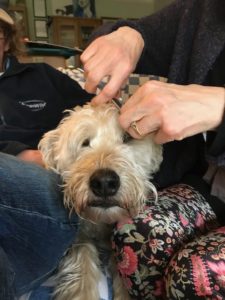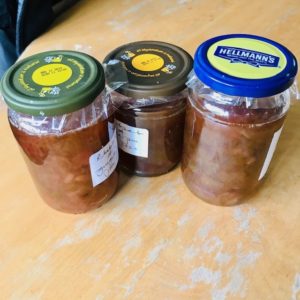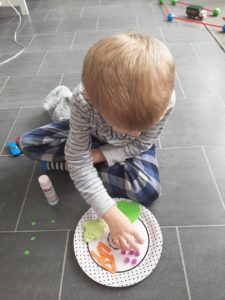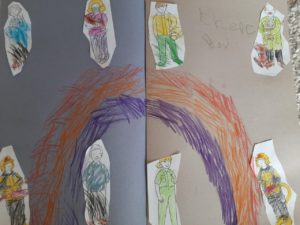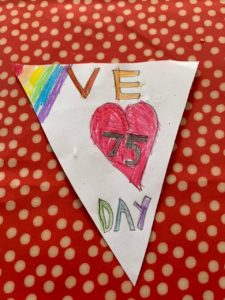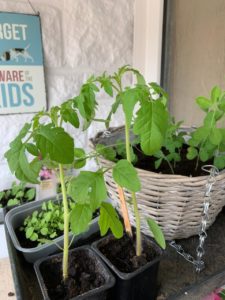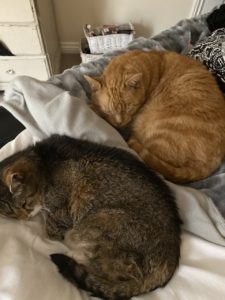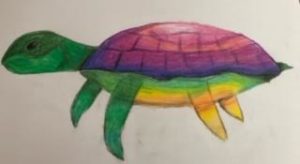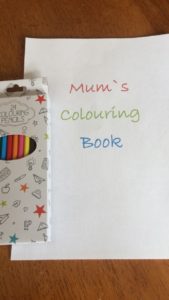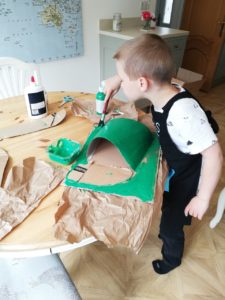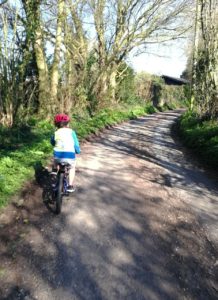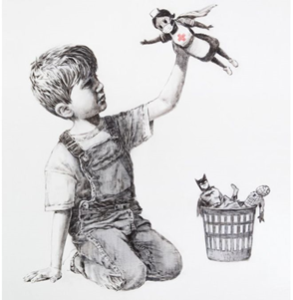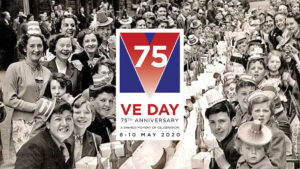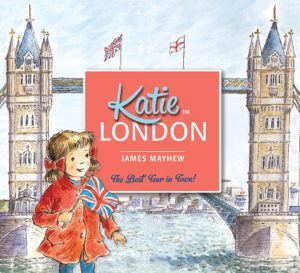Home learning 29th May
Dear all
We hope that you have all had a lovely half term break. We look forward to welcoming some of you back to school on the 1st. The learning below is that which we will be using to teach those in school so that the experience for children will be as consistent as it can be in these strange times!
Remember that there is no need to complete all of the learning below! The focus should be on maths, some aspects of the online English learning and reading and then maybe you could choose one other project to do from the home learning ideas? Or more if you want to obviously! Make this time at home enjoyable and treasure the time you are together having fun! Remember that you can send us a piece of the children’s work or an activity that they want to share every week on our class email addresses:
Turtleclass@stpeterswaterlooville.hants.sch.uk
Pufferfishclass@stpeterswaterlooville.hants.sch.uk
We would love to see what the children are getting up to at home!
Don’t forget to look at Sumdog for maths, reading and spelling challenges which will be updated each week. See also mymaths for maths challenges.
English reading and writing
https://www.thenational.academy/year-1/english/terrifying-t-rex-year-1-wk5-1#slide-2
https://www.thenational.academy/year-1/english/to-commit-an-information-text-to-memory-year-1-wk5-2
https://www.thenational.academy/year-1/english/to-understand-how-to-use-the-past-tense-year-1-wk5-3
https://www.thenational.academy/year-1/english/to-start-to-write-our-information-text-year-1-wk5-4
https://www.thenational.academy/year-1/english/to-start-to-write-our-information-text-year-1-wk5-4
In this weeks sequence of lessons you will be learning about the story of ‘Terrifying T-Rex.’ You will be doing some phonics focusing on the sound oo (smooth), ew (grew) and u-e (flute) as well as some spellings linked to the story.
On day 1 you will answer questions on the information text, day 2 committing the information text to memory, day 3 understanding how to use the past tense, day 4 and 5 starting and completing writing an information text.
If it is a bit tricky or moves too fast for your child just focus on the key phonics being taught, or one version of the sound that your child knows e.g. oo and on verbally retelling the story and writing some simple sentences or key words. Maybe you could just work on one day of the online learning? Do what you feel your child can cope with. At the very least you can enjoy learning about T Rex together.
Reading
We attach the link below because we feel it has some useful ideas. See page three. We are sure that you are doing many of them already!
Menu of reading response ideas KS1
Also see the Collins connect PDF (see blog post for link) for access to lots of books to read online.
ONLINE READING COLLINS CONNECT
Spelling
Choose a set 1 or set 2 and practise spelling.
Set 1: they, your, of, all
Set 2: house, full, our, ask
We know that you will have had some of these spellings before but revisiting and consolidating will ensure that you can use them independently in context in your writing.
Maths
To apply knowledge of number bonds
https://www.thenational.academy/year-1/maths/to-apply-knowledge-of-number-bonds-year-1-wk5-1
To add two-digit numbers and ones
https://www.thenational.academy/year-1/maths/to-add-two-digit-numbers-to-ones-year-1-wk5-2
To subtract two-digit numbers and ones
https://www.thenational.academy/year-1/maths/to-subtract-two-digit-numbers-and-ones-year-1-wk5-3
To add two-digit numbers to ones with regrouping
To subtract two-digit numbers to ones with regrouping
Peter and the Wolf
Week 1- Peter
Listen to this short piece of music and find the picture of a violin?
How does the music make you feel?
Can you move around to it?
Topic
This week we are introducing our new topic of ’Antarctica’. In this topic we hope to explore where the region is in comparison to where we are, to compare weather conditions, housing and people as well as think about animals and how they live in this challenging environment.
This week we are going to start by thinking about where Antarctica is and any special features about its geography and climate. Watch these 2 short films and then chat to your adult about what you have learnt. Perhaps your adult may pause the film from time to time to talk about what you can see?
https://www.bbc.co.uk/bitesize/topics/zyhp34j/articles/zjg46v4
https://www.youtube.com/watch?v=X3uT89xoKuc
Have a look in an atlas or a world map and see if you can find where the Antarctic is. Can you make a fact file about what you have learnt so far?
Art
ANIMAL MAGIC!
For this week’s Art Challenge I would like you produce some art that is linked to ANIMALS! Your animal can live on the land, in the sea or the sky. If you prefer, you can make your own mythical animal from your own imagination… or even a fusion of two animals. It can be a drawing, a painting, it can be made from a kitchen roll tube, a painted stone, made from things you find in the woods or at the beach or anything else that you can think of. I’m sure you will create something ‘magical’, as always!
Ideas to inspire you:
However, if this doesn’t appeal to you can still send any other art work to me and I will post that on the Blog too.
Please email your artwork to me:
n.pearson@stpeterswaterlooville.hants.sch.uk
Thank you
Keep creating and keep safe!
Mrs Pearson
Family Science Activity
Spinema
https://www.rigb.org/families/experimental/spinema
We’re all used to seeing films and animations. This activity is all about understanding a bit more about how these work, and why our brains perceive what is actually a series of still images as flowing motion.
Click this link to see vintage images from the early days of animation https://ri-science.tumblr.com/search/muybridge
By making a thaumatrope, you can learn about ‘persistence of vision’, as two images pass by your eyes so quickly that you are still processing one when you see the next, so your brain merges the two together to see a complete image.
A phenakistoscope works just like classic animation and movies. By rapidly showing one image after the other, each slightly different to the one before, a sense of movement is created. This known as ‘beta movement’, and is the basis of any moving image you see on a screen.
The activity
- Make a thaumatrope and a phenakistoscope – templates are available to download or you can draw your own.
- ExpeRiment with animation.
- Learn how we process images and motion.
https://www.rigb.org/docs/spinema_infosheet_0.pdf
Questions to ask children
Before the activity: What types of cartoon/animation do you know? How do they make drawings or models seem to move?
After the activity: What differences are there in the images? What would happen if we spun the disc in the opposite direction? What if we spun them faster/slower? What would happen if the phenakistoscope had more/less drawings?
Going further
Try making a flip book. You can see how at rigb.org/ExpeRimental.
22nd May
We will not be setting any home learning over the half term holiday so that you and the children can have a well earned rest! Thank you so much for the support you have given us and the children over the last weeks. We are so pleased to hear in our phone calls and to see in your emails the learning that is going on at home in these difficult circumstances. If you have some time and your child is keen you could always continue with some reading and practising number facts and possibly catching up on any of the activities you may have missed over the last few weeks. But that is totally your choice! Enjoy this time together free from the pressures of home teaching!
As a staff team we are all getting ready and looking forward to welcoming many of you back to school as soon as we can.
Keep safe and take care
Love from all in the year 1 team.
Home learning 15th May 2020
We will start this week with some teacher news!! Home learning further on in the blog!
Mrs Cass
HOME LEARNING
Dear all
Here is our home learning for the week including our weekly family science activity and music exploration. We so hope that you enjoy this learning together. We are looking forward to seeing the castles you have made! May we take this opportunity to say that there is no need to complete all of the learning below! The focus should be on maths, some aspects of the online English learning and reading and then maybe you could choose one other project to do from the home learning ideas? Or more if you want to obviously! Make this time at home enjoyable and treasure the time you are together having fun! Remember that you can send us a piece of the children’s work or an activity that they want to share every week on our new class email addresses:
Turtleclass@stpeterswaterlooville.hants.sch.uk
Pufferfishclass@stpeterswaterlooville.hants.sch.uk
We would love to see what the children are getting up to at home!
Don’t forget to look at Sumdog for maths, reading and spelling challenges which will be updated each week. See also mymaths for maths challenges.
English reading and writing
Listen to a version of the book here!
https://www.youtube.com/watch?v=BXgW9UCgpc8
In this weeks sequence of lessons you will be learning about the story of ‘The Tiger Who Came To Tea.’ You will be doing some phonics focusing on the sound ee (feet), ea (tea) and y (happy) as well as some spellings linked to the story.
On day 1 you will be predicting the story, day 2 committing the story to memory and drawing a story map, day 3 identifying and writing questions (revisiting skills we have learnt in class), day 4 and 5 starting and completing writing a story.
If it is a bit tricky or moves too fast for your child just focus on the key phonics being taught, or one version of the sound that your child knows e.g. ee, and on verbally retelling the story and writing some simple sentences or key words. Maybe you could just work on one day of the online learning? Do what you feel your child can cope with. At the very least you can enjoy listening to the story on you tube.
https://www.thenational.academy/year-1/english/the-tiger-who-came-to-tea-year-1-wk4-1
https://www.thenational.academy/year-1/english/to-commit-a-story-to-memory-year-1-wk4-2
https://www.thenational.academy/year-1/english/to-start-to-write-our-story-year-1-wk4-4
https://www.thenational.academy/year-1/english/to-write-the-end-of-our-story-year-1-wk4-5
Reading
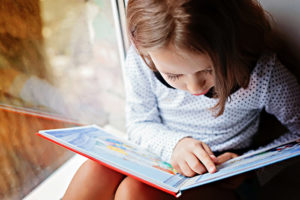 We attach the link below because we feel it has some useful ideas. See page three. We are sure that you are doing many of them already!
We attach the link below because we feel it has some useful ideas. See page three. We are sure that you are doing many of them already!
Menu of reading response ideas KS1
Also see the Collins connect PDF (see blog post for link) for access to lots of books to read online.
ONLINE READING COLLINS CONNECT
Spelling
Choose a set 1 or set 2 and practise spelling.
Set 1: was, have, are said
Set 2: looked, called, asked, people
We know that you will have had some of these spellings before but revisiting and consolidating will ensure that you can use them independently in context in your writing.
Maths
Watch these videos. We hope that you have been having fun with the online maths learning. Remember to do what you can. There is no expectation to complete it all!
LO: To identify patterns within a sequence of numbers
To compare numbers within 100 on a place value chart
To order numbers within 100
https://www.thenational.academy/year-1/maths/to-order-numbers-within-100-year-1-wk4-3
To order numbers within 100
https://www.thenational.academy/year-1/maths/to-order-numbers-within-100-year-1-wk4-4
To identify patterns within a sequence of numbers
Science
This week we are going to learn a bit more about where some minibeasts in our environment live – their habitat.
Have you ever wondered where worms live? What they eat?
Make your own wormery. It’s really easy! Use the website.
https://schoolgardening.rhs.org.uk/Resources/Activity/Mini-wormery
Topic
We have learnt so much about castles! Can you make a model of a castle out of junk in your home? Can you add some of the defensive features that castles had to keep invaders out? Have a look at some photographs on line or use your imagination to create your own fantasy castle fit for a knight or princess. The links below show different ways you could make a castle but you can let your imagination run riot and use whatever junk you have at home!
https://www.youtube.com/watch?v=_BfmWyeZU38
Music
Persons with Long Ears
Listen to the violin.
https://www.youtube.com/watch?v=VQfgeutobG8
Is this music sad or happy?
Which kind of animals might have long ears?
Art
Art Challenge Famous Landmarks:
For this week’s Art Challenge I would like you produce some art that is linked to a famous landmark. Your landmark can be natural or man-made. It can be a drawing, a sculpture made from recycled materials, a collage, something made out of pebbles and twigs , it could be drawn on a tablet or made out of Lego, or indeed else that you can think of. I have even seen Big Ben made out of socks! Let you imaginations run wild!
Here are a couple of ideas:
However, if this doesn’t appeal to you can still send any other art work to me and I will post that on the Blog too.
Please email your artwork to me:
n.pearson@stpeterswaterlooville.hants.sch.uk
Thank you
Keep creating and keep safe!
Mrs Pearson
Family Science Activity
Balancing Structures
The activity – Make a balancing toy.
Experiment with the design of your toy to find out what affects whether or not it balances.
Learn about the centre of mass of an object and how it relates to whether or not something balances.
https://www.rigb.org/docs/balancing_sculptures_infosheet_0_0.pdf
activity worksheet in full
What you need:
- A carrot or similar vegetable
- Kebab skewers
- Marshmallows and/or other jelly type sweets, or small pieces of carrot or similar hard vegetables.
- Plasticine or blu-tac
- 500ml soft drink bottle or washing up liquid bottle
Stage 1: Cut a piece of carrot about 3 cm long. Stick a kebab skewer into one end of the piece of carrot and break the skewer so that you have only 2 or 3 cm of it sticking out. Try to stand the carrot piece up on the end of the kebab skewer – you should find this very difficult, if not impossible to do.
Stage 2: Stick a kebab skewer into each side of the carrot so that they point downwards at about 45 degrees. Then stick a marshmallow or other jelly sweet onto the ends of the skewers, as shown in the picture below. Place this on top of a bottle and you should find that it balances.
Get children to investigate what happens when you slide the marshmallows up and down the ‘arms’ of the sculpture and if you add more marshmallows. Stick an additional two or more kebab skewers into the carrot and challenge children to add at least one item to each skewer and still keep the sculpture balanced.
Questions to ask children: With just central part of the sculpture: why doesn’t this stay balanced? Before showing them stage 2: do you think we can use more kebab skewers and anything else to help it balance? Why do you think it balances like this? What can we change? (position of skewers, items pushed onto the skewers, position of things on skewers) What do you think will happen if we change these things? What do you think we need to do to make sure our sculpture balances?
Going further:
Try making some animal-shaped balancing toys: http://bit.ly/AniBalance
Make a balancing butterfly: http://bit.ly/BalanceButterfly
Home learning 8th May.
For teacher news and art home learning please see posts below this one!
Dear all
Here is our home learning for the week including our weekly family science activity and music exploration. We so hope that you enjoy this learning together. May we take this opportunity to say that there is no need to complete all of the learning below! The focus should be on maths, English and reading and then maybe you could choose one other project to do from the home learning ideas? Or more if you want to obviously! Make this time at home enjoyable and treasure the time you are together having fun!
Remember that you can send us a piece of the children’s work or an activity that they want to share every week on our new class email addresses:
Turtleclass@stpeterswaterlooville.hants.sch.uk
Pufferfishclass@stpeterswaterlooville.hants.sch.uk
We would love to see what the children are getting up to at home! Thank you to all of you who have sent in pictures so far. Keep them coming!
Just a reminder about the letter that Mr Cunningham sent you last week from the DFE. It will have daily phonics lesson for the children following the letters and sounds programme that we use in school. We hope it is helpful!
Don’t forget to look at Sumdog for maths, reading and spelling challenges which will be updated each week. See also mymaths for maths challenges.
English reading and writing
In this weeks sequence of lessons you will be learning about the story of ‘St George and the Dragon’. You will be doing some phonics focusing on the sound oa (goat), ow (snow) and o-e (bone) as well as some spellings linked to the story. You will be learning all about St George, who he was and learning a bit about the geography of the United Kingdom in the process! As last week you will be committing the story to memory and making a story map. Then you will be developing a character description of a dragon and describing its personality using some great adjectives to describe him/her. Have fun!
If it is a bit tricky or moves too fast for your child just focus on the key phonics being taught, or one version of the sound that your child knows e.g. oa, and on verbally retelling the story and writing some simple sentences rather than retelling the whole story. Drawing and labelling the dragon will be a great activity for all to tackle. Do what you feel is right for your child.
If you have no or poor access to a computer or similar see if you can find out about the story of St George and the Dragon and follow the plan as outlined above. This is a nice sequence of activities that you can do without a computer!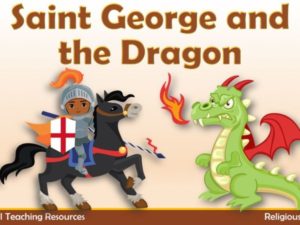
https://www.thenational.academy/year-1/english/saint-george-and-the-dragon-year-1-wk3-1
https://www.thenational.academy/year-1/english/to-commit-a-story-to-memory-year-1-wk3-2
https://www.thenational.academy/year-1/english/to-describe-a-characters-appearance-year-1-wk3-3
https://www.thenational.academy/year-1/english/to-describe-a-characters-personality-year-1-wk3-4
https://www.thenational.academy/year-1/english/to-write-a-character-description-year-1-wk3-5
Reading
We attach the following link again as it has some useful ideas. See page three. We are sure that you are doing many of them already!
Menu of reading response ideas KS1
Also see the Collins connect PDF below for access to lots of books to read online.
ONLINE READING COLLINS CONNECT
Spelling
Choose a set 1 or set 2 and practise spelling.
Set 1: love, her, pull, put
Set 2: their, could, because, were
Try writing these in different ways: can you ‘write’ them on the back of someone in your house?
Maths
This week we will be exploring numbers to 100. Follow this sequence of lessons.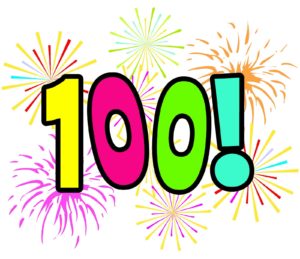
To recognise, read and write numbers to 100
https://www.thenational.academy/year-1/maths/to-recognise-read-and-write-numbers-to-100-year-1-wk3-1
To explore the components of numbers within 100
To explore the components of numbers within 100
To apply knowledge of number bonds.
https://www.thenational.academy/year-1/maths/to-apply-knowledge-of-number-bonds-year-1-wk3-4
To find one more or one less and ten more or ten less.
This week we are going to think a bit more about where the minibeasts in our environment live – their habitat. When you have looked outside at minibeasts in your garden or park did you notice anything different about the sorts of places that they live? Were some out in the sunshine while others lived in cold, damp and dark places? Are some up in trees and bushes while others live underground? Did they all live together as a ‘family’ or are they insects that live on their own? Go and have a look outside and note down any observations you can make about their ‘habitat’. This little video shows a few different minibeasts in their habitats. The way that the bees and ants live is so clever!
https://www.youtube.com/watch?v=JuHg5oWF_mo
Topic
Can you find out about what it was like to live and work in a mediaeval castle? What sorts of jobs did people in a castle do? What is the job of an armorer? Or the apothecary? And what was a cordwainer?! See if someone at home can help you to use the computer to do some research about jobs in a castle and then make a fact file with pictures to show what you have find out about the different jobs.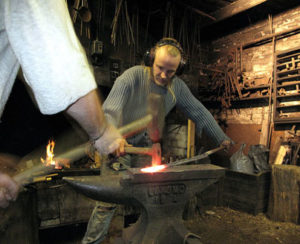
The video below is quite long and aimed at older children / adults but is quite interesting in talking about who and how you become an armourer and with some modern day demonstration of how armour was made. Your adult might like to find some bits in the video that may be interesting to you! It is a bit longwinded!
https://www.youtube.com/watch?v=NsNPNxq7re0
Music
Listen carefully to the music.
https://www.youtube.com/watch?v=oCUtOKsmOZ8
Can you spot when it gets loud and quiet?
What might live in the aquarium? What else might you see?Could you create an aquarium in a bowl of water? How might the animals move around?
Family Science Activity – Friday 8th May
THE SCIENCE OF OOBLECK
https://www.science-sparks.com/how-to-make-oobleck/
Did you notice that if you make a ball with oobleck or gloop it feels solid, but if you drop the oobleck on the floor it turns liquid again? The slime is a non – Newtonian fluid as it doesn’t flow like liquids normally do.
https://www.youtube.com/watch?v=Fnd-2jetT1w
Cornflour gloop ( oobleck ) is made up of molecules arranged in long chains. When the chains are stretched the liquid will flow, but when you force them together they stick together to form a solid.
OOBLECK RECIPE
- Cornflour
- Water
- Food colouring – optional
- Ice cube trays – optional
- Mixing bowl
- Colander, funnel and beakers – optional, but great for messy fun!
INSTRUCTIONS FOR MAKING CORNFLOUR GLOOP
- Fill a cup with cornflour and add to the bowl
- Add water very slowly mixing with your hands, until you get a sticky, slimy gloop.
- If you want to make it coloured add some food colouring. ( be careful this can stain skin and clothes)
- Play with the slime and see how it behaves. Can you make it into a ball? and what happens if you throw it onto the floor?
- Can you squeeze the slime into a ball? What does it feel like? How long does the ball stay solid after you let go?
- If you used less water do you think the slime would fall faster or more slowly through the colander?
OOBLECK CHALLENGE
Can you make a giant oobleck tray and walk on oobleck?
HOW TO MAKE A GIANT OOBLECK TRAY
To make our giant oobleck tray – pour about 1 kg of cornflour into a large black tray and slowly added water until the consistency was wet, but solid when squeezed.
Friday 8th May – Religious education
| Subject knowledge: Fifty days after his resurrection, the Lord sent the Holy Spirit down from heaven upon his disciples. The age of the church began. Pentecost shows that the church is there for all peoples from the very beginning. |
As part of your RE learning, we would like you to focus upon the upcoming celebration of Pentecost
- Watch a video on YouTube or read from the gospel, Act 2 1-13.
When did the Pentecost happen?
What did Jesus promise?
How did the disciples feel before and after the spirit came?
- Retell the story using pictures or your toys.
- Draw, paint or create your favourite part of the story.
Key Verse: John 3:8 “The wind blows where it wishes and you hear the sound of it, but do not know where it comes from and where it is going; so is everyone who is born of the Spirit.”
Materials Needed:
One square piece of paper, scissors ,one split pin, pencil, crayons, coloured pencils, and stickers for decorating the pinwheels.
Instructions:
Fold the paper on the diagonal from corner to corner. Open the paper up and fold on the second diagonal across the other two corners. When the paper is opened flat, the folds make an “X” across the square.
Make one cut along each fold beginning at the corner and cutting toward the centre. The cut should stop about halfway toward the centre. The cut should not go all the way to the centre of the square.
Decorate each section of the square on both sides.
Take every other corner, one at a time and gently pull it up to the centre of the square.
When all four corners meet at the centre, take the split pin and push it through all four corners through the centre of the square.
Push the split pin through the eraser of the pencil.
Blow on the pinwheel and watch it spin!
Use this craft to teach the children about how we can hear and feel the wind, but we cannot see it. We can see the results of the wind, but we cannot see the wind itself. Relate this to God. We can hear His voice through His Word and feel His peace, comfort, joy, etc. We cannot see Him, but we can see the results of His work.
- What was it like in the room when the Holy Spirit came to the disciples?
Look at pictures of artists impressions of the upper room.
What do you think is happening in these pictures?
How do you think the disciples are feeling?
- Draw, paint or create your own impression of what the upper room looked like.
What we are up to!
Mrs Jonas
This week I have been busy making rhubarb and ginger jam. The rhubarb grows in my garden but no one but me likes it in my house so I always have a cupboard full of jam and a freezer full of cooked rhubarb! I have also had to trim the hair around my dog Freddie’s eyes as he could hardly see out! He was not very impressed… ! I am looking forward to a zoom family VE day quiz on Friday when I need to dress up! What shall I wear? We will put up the bunting, playing music from the 1940’s and make a cake to celebrate this special day. What will you be doing to celebrate?
I hope you are all keeping safe. I am really missing you all.
Love Mrs Jonas
Mrs Cass
Hello! How are you all? I hope you are enjoying the learning at home as well as making time to do some activities you really love. This week I have been enjoying doing some artwork with my daughter. Here are two of the pictures we made; my daughter created a colourful turtle while I created a flower using sketching pencils and pastels. I am really enjoying seeing some of your artwork that has been emailed in – keep it up!
Take care and I hope to see you all soon.
Mrs Knight
I’ve been planting some pots up in the garden. Also my mum wanted to do some colouring as she’s not able to go out so I’ve made her a colouring book and bought her some pencils! I’m still helping my son with his paper round everyday and have started a 30 yoga course with a YouTube yoga teacher!
Ralph has been continuing to practice riding his bike on the road. He has to wear high visible jacket and a helmet of course. We went for a 8 mile ride on Monday!
On Wednesday, we learned about Anderson Air Raid shelters. We built ours out of card, glue, green paint and moss we went scavenging for on a walk in the forest.
Today, I am going to make some jam tarts and some finger sandwiches for our VE day lunch . Yummy!
Until out next adventure. Love Mrs Webster
Mrs Pearsons art!
Art Challenge Who’s YOUR SUPERHERO?
This new Banksy artwork has appeared at Southampton General Hospital.
It shows a young boy kneeling by a wastepaper basket dressed in dungarees and a T-shirt. He has discarded his Spiderman and Batman model figures in favour of a new favourite action hero – an NHS nurse. The artist left a note for hospital workers, which read: “Thanks for all you’re doing. I hope this brightens the place up a bit, even if it’s only black and white.”
However, if this doesn’t appeal to you then you can still send any other art work to me and I will post that on the Blog too.
Please email your artwork to me:
n.pearson@stpeterswaterlooville.hants.sch.uk
Thank you
Keep creating and keep safe!
Mrs Pearson
VE day history learning
History VE Day Home Learning – Friday 1st May 2020
The year 1 weekly home learning is in the post below!
KS1
Friday 8th May is VE day celebrations so please take part in this home learning to engage with understanding what it is all about.
Read through the Twinkl PowerPoint and watch this video to learn about what VE day celebration means:
https://www.bbc.co.uk/teach/class-clips-video/history-ks2-ve-day/z7xtmfr
Choose from the activities below:
Activity 1
Design your own medal looking at the attached document for some ideas. You can draw, colour then label it on paper or you could make a medal using different scraps of materials around your home. I don’t mind how you choose to do it just be creative and enjoy engaging in the learning about this celebration.
Activity 2
Imagine you are reporting to the news about this victory. Dress up as a soldier and talk about how you might have felt about this celebration. Express how excited you are and can’t wait to see your families.
Activity 3
Write a postcard to a missing family member telling them about your VE day celebrations. Draw a picture on the other side to show what you did and what you saw.
Activity 4
Make your own radio broadcast to announce Victory in Europe. You could even pretend to be Winston Churchill!
If possible, send photos or videos of your work to myself (Mrs Conlon) via my class email address so they can be put onto the school curriculum blog:
starfishclass@stpeterswaterlooville.hants.sch.uk
Have lots of fun learning all about this special celebration.
I am looking forward to seeing your great history learning.
Best regards
Mrs Conlon
(History lead teacher)
Home learning 1st May
Dear all
Here is our home learning for the week including our weekly family science activity, VE day art challenge and music exploration. Please check that you have seen other blog posts. This week there is a separate history VE day post. We so hope that you enjoy this learning together. Remember that you can send us a piece of the children’s work or an activity that they want to share every week on our new class email addresses:
Turtleclass@stpeterswaterlooville.hants.sch.uk
Pufferfishclass@stpeterswaterlooville.hants.sch.uk
We would love to see what the children are getting up to at home!
Just a reminder about the letter that Mr Cunningham sent you this week from the DFE. It will have a daily phonics lesson for the children following the letters and sounds programme that we use in school. We hope it is helpful!
Remember also to keep an eye out for the teachers news blog below this entry. This and other blog posts may appear at different times so keep your eye out!
Don’t forget to look at Sumdog for maths, reading and spelling challenges which will be updated each week. See also mymaths for maths challenges.
English reading and writing
The ‘Katie in London’ sequence of lessons is a great learning activity. You will need a pencil and paper before you start the online learning for this story! You will be doing some phonics focusing on the igh, ie and i-e sound as well as committing the story to memory, using capital letters and writing your own stories! If it is a bit tricky or moves too fast for your child just focus on the key phonics being taught, or one version of the sound that your child knows e.g. igh, and on verbally retelling the story and writing some simple sentences rather than retelling the whole story. Do what you feel is right for your child.
https://www.thenational.academy/year-1/english/katie-in-london-year-1-wk2-1
https://www.thenational.academy/year-1/english/to-commit-a-story-to-memory-year-1-wk2-2
https://www.thenational.academy/year-1/english/to-use-capital-letters-for-proper-nouns-year-1-wk2-3
https://www.thenational.academy/year-1/english/to-begin-to-write-our-story-year-1-wk2-4
https://www.thenational.academy/year-1/english/to-continue-to-write-our-story-year-1-wk2-5
Reading
The link below also has a range of ideas of how to develop a love of reading for your child. See page three. We are sure that you are doing many of them already!
Menu of reading response ideas KS1
Also see the Collins connect PDF below for access to lots of books to read online.
ONLINE READING COLLINS CONNECT
Spelling
Choose a set 1 or set 2 and practise spelling.
Set 1: to, she, his, has
Set 2: where, here, school, have
Try writing these in different ways: using paint brushes and water, different writing tools, drawing in flour … what other ideas can you think of?
Maths- measure
|
Watch these videos
https://www.thenational.academy/year-1/maths/to-compare-lengths-and-heights-of-objects-year-1-wk1-1
Challenge
- What could you use to measure how tall you are? Is it easier to measure someone lying down or standing up?
- What could you use to measure the length of your bedroom?
- Which room in your house is the longest/shortest?
Science
Watch this clip about minibeasts.
https://www.bbc.co.uk/bitesize/clips/z44g9j6
Minibeasts use all sorts of different ways to protect themselves from predators. Can you talk to your grown ups and decide what adaptations you think the minibeasts have developed to protect themselves?
Make a model of a minibeast from the junk and other materials you may have in your home. What adaptations and protections can you give your minibeast? Can you write a description of your minibeast explaining how it will protect itself from others including describing how where it lives may offer some protection?
Topic
Knights.
Over the centuries knights have worn very different things to protect themselves in battle. Look at the photographs below. What differences do you notice about the clothes they were wearing over 1000 years ago and in the 17th Century? What is the same about the clothes? What materials are they made from? Which ones do you think would protect you the best? Which do you think would be the easiest to wear and why?
Perhaps you could draw yourself in a set of armour from the period you like best?
https://www.youtube.com/watch?v=F4ovVbk4hP0
Watch a short video about how to joust like a knight!
Music
Hens and Roosters
Listen carefully to the music.
https://www.youtube.com/watch?v=dHYSx6x1Ttw
Can you hear how the music shows the hens and roosters scratching the ground?
Can you hear them crowing and clucking? Create your own hens and rooster music using everyday objects.
Family science
Family Science Activity – Friday 1st May
Please open the following attachment for family science this week.
Family Science Activity 1.5.20 (1)
Have fun!
Art Challenge Celebrations for VE Day
Portsmouth Naval Base is looking to mark the occasion of VE day and need YOUR HELP! They have asked for you to draw pictures on the subject of WW2 & VE DAY and as an extra challenge try to incorporate a rainbow somewhere in the picture (even in the corner). The pictures will be displayed within the Naval Base and once the day is over they hope to make contact with local nursing homes to distribute the pictures to help cheer our elderly community. If you would like your work sent to the Naval base you will have to email it to me by Monday evening. However, all work sent to me, even after Monday, will still be displayed, as usual, on the Art Blog.
In addition to the drawings for the Naval Base, I would appreciated any art and craft linked to this important historic occasion , such as bunting, chalk drawings, figures of soldiers, planes or medals. I know, as always, you will blow me away with your imaginative ideas and creativity.
Please email your artwork to me:
n.pearson@stpeterswaterlooville.hants.sch.uk
Thank you
Keep creating and keep safe!
Mrs Pearson
